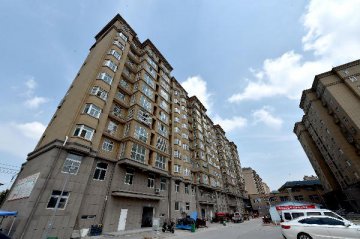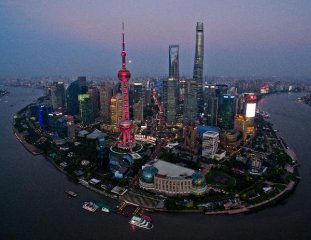
Ineffective monetary policy is hindering Beijing’s efforts to pep up growth, with little of the extra cash it has pumped into the financial system filtering into the real economy.
China’s government is taking other measures to stimulate economic expansion, including tax cuts and selective spending on infrastructure. Yet this stimulus is likely to be less effective than before, given a much larger economy and years of rapid debt growth—making central bank action more important.
While interest rates are typically the main tool used by central banks, China is unusual in frequently conducting policy by changing the sums banks must hold in reserve relative to deposits. The People’s Bank of China, which isn’t independent, does this partly because this reserve-requirement ratio is less politically sensitive than altering rates.
Since January 2018, it has undertaken five rounds of credit easing this way, theoretically freeing up hundreds of billions of dollars for banks to propel economic growth. Still, banks are reluctant to lend to struggling private companies, many of which need fresh loans to keep themselves afloat.
Instead, banks have been more willing to lend short term, often to financial borrowers. That reduces their risk but often ends up fueling speculative bets on markets. Meanwhile stronger firms, which can still get credit, are wary of borrowing to fund long-term investments.
“Money is staying in the financial system and not entering the real economy, as long as profit margins in sectors like manufacturing are thinning,” said Landing Zhang, chief executive of Shanghai asset-management firm CYAMLAN Investment.
Slower growth in China is affecting everything from smartphone sales to oil exports, and companies and countries in its orbit are beginning to feel the crunch. Photo Composite: Crystal Tai
Julian Evans-Pritchard, an economist at Capital Economics, said there were “lots and lots of companies willing to borrow” but the supply of credit was limited. Among the better-performing firms, he said, “Loan demand is weakening due to greater uncertainties about the economy.”
On the surface, Beijing’s efforts look impressive: Overall credit, including bank loans and funds raised in capital markets, expanded by a record 5.3 trillion yuan ($789.7 billion) in the first two months of this year. China’s Lunar New Year holiday, which falls on different dates every year, can upset monthly comparisons, so analysts often look at combined January and February figures.
Meanwhile, the three-month Shanghai interbank offered rate, a popular gauge of short-term funding costs, has dropped to 2.81% from 4.73% in January 2018.
However, banks extended 1.913 trillion yuan of new long-term corporate loans in January and February, Wind data shows, about 4% less than in the same period a year earlier.
And while that sum comfortably exceeded the totals for new short-term corporate loans and bankers’ acceptances—another shorter-dated lending instrument—volumes of these shorter-dated instruments leapt. That suggests a surge in borrowing to fund financial bets rather than business investment.
Unusually, Premier Li Keqiang earlier this year criticized the rise of short-term funds for potentially fueling speculation and allowing risk to build up.
Other central banks have faced similar dilemmas. After the financial crisis, the European Central Bank failed to spark a lending boom despite pumping about €3 trillion ($3.4 trillion) into banks’ books.
A core problem is that authorities are trying at once to protect growth and cut financial risk. The second goal prevents more aggressive easing, economists say, and has also rattled bankers.
The Chinese central bank didn’t respond to a request for comment.
Chinese lenders, most of which are state-owned, have for decades favored their public-sector corporate peers. While private companies generate around nine out of every 10 new jobs in the country, according to the official Xinhua News Agency, loans for them are scarcer and more expensive than for state companies.
Beijing’s easing has brought down lending rates by about 0.5 percentage point for corporate loans in general in the past year, but interest rates on one-year loans for private firms remain elevated at 6% to 8%, according to bank officials. State-run enterprises pay rates much closer to the benchmark one-year lending rate of 4.35%.
“We already have lots of bad loans in hand and we haven’t lent to [small and medium-size enterprises] for two to three years. Our loan officers will find all kinds of excuses not to do so now as well,” said a branch manager at Citic Bank in the northern Inner Mongolia region.
A recent Communist Party ruling retroactively holding state officials accountable for “major policy errors” during their tenure has further reduced bankers’ incentives, she added. “How can I be responsible for a bank loan for the rest of my life?”
To be sure, Beijing has pressed its largest banks to lend more to the private sector. Industrial & Commercial Bank of China Ltd.’s outstanding loans to smaller businesses rose by 18% in 2018, for example. Still, the country’s largest bank by market value accounts for less than 1% of all such loans.
A similar divergence shows in the bond market. Yields on five-year corporate bonds with a triple-A domestic rating, a grade mostly held by state enterprises, have fallen by 1.16 percentage points in a year. Those on debt rated double-A minus have risen 0.23 percentage point. Debt with this rating, China’s equivalent of junk, is mostly issued by private firms.
The gulf is partly because Beijing is allowing more defaults, another move designed to reduce long-term financial risk. Previously, authorities often stepped in to prevent borrowers from failing to repay creditors, even if these were notionally private firms.
Source: The Wall Street Journal






















Latest comments